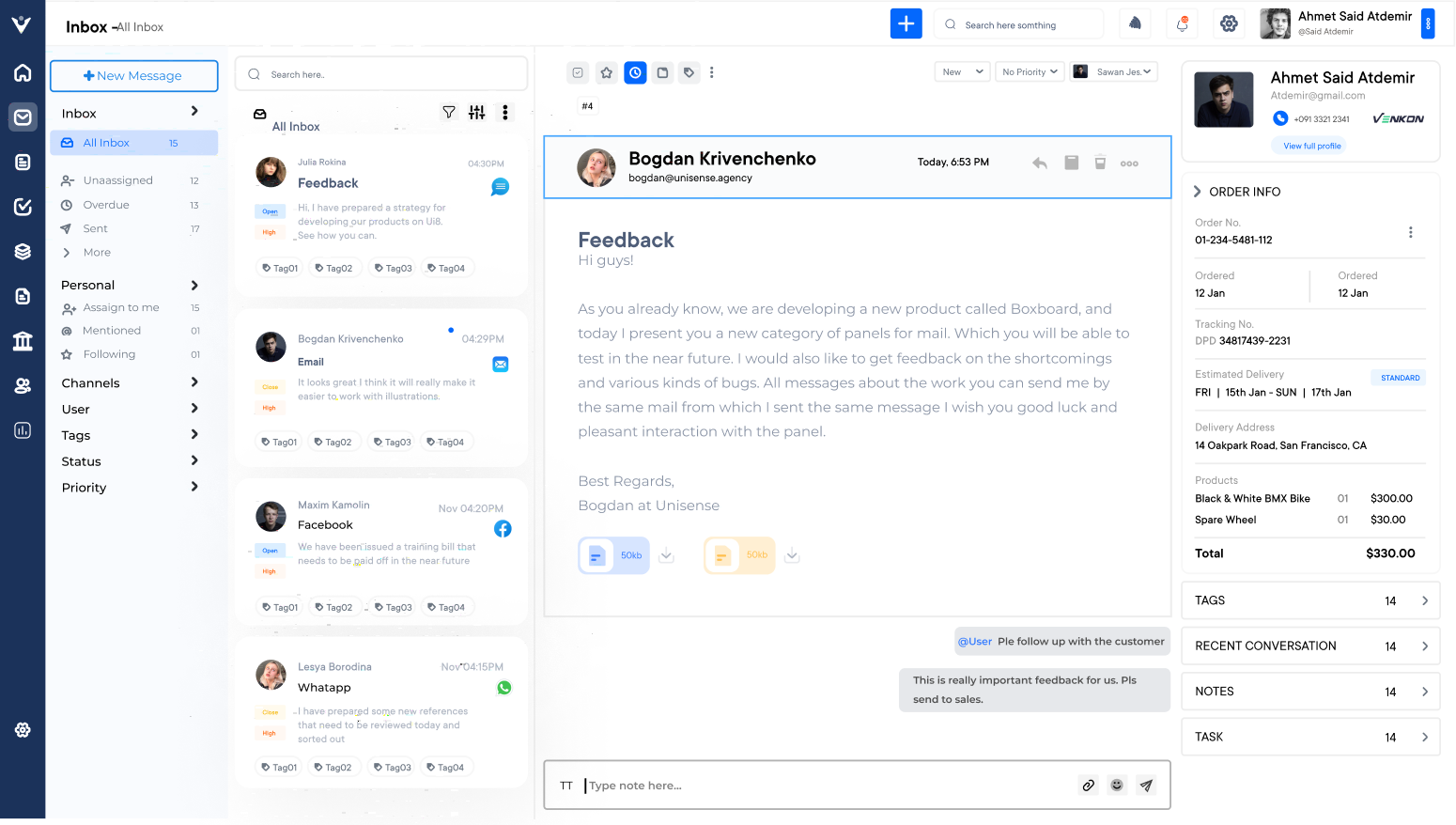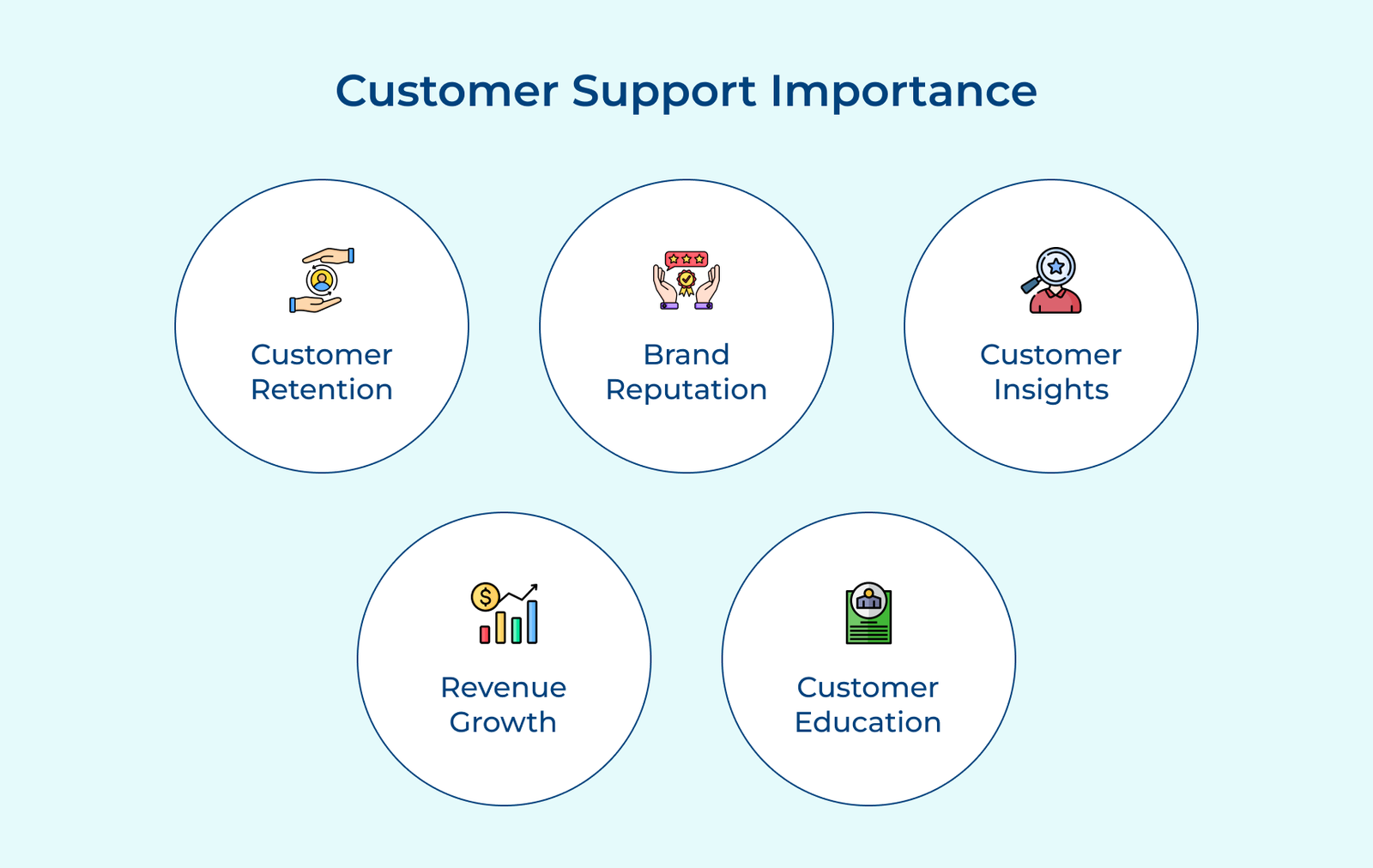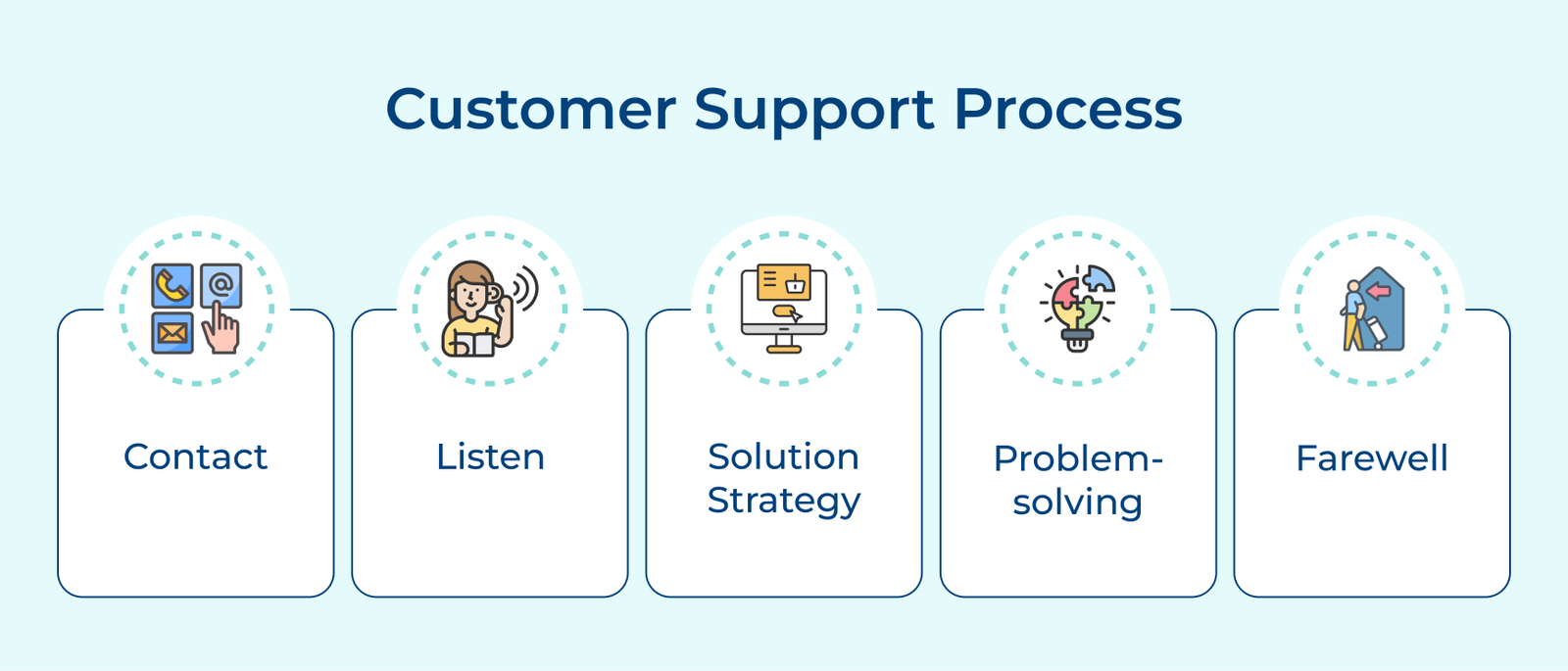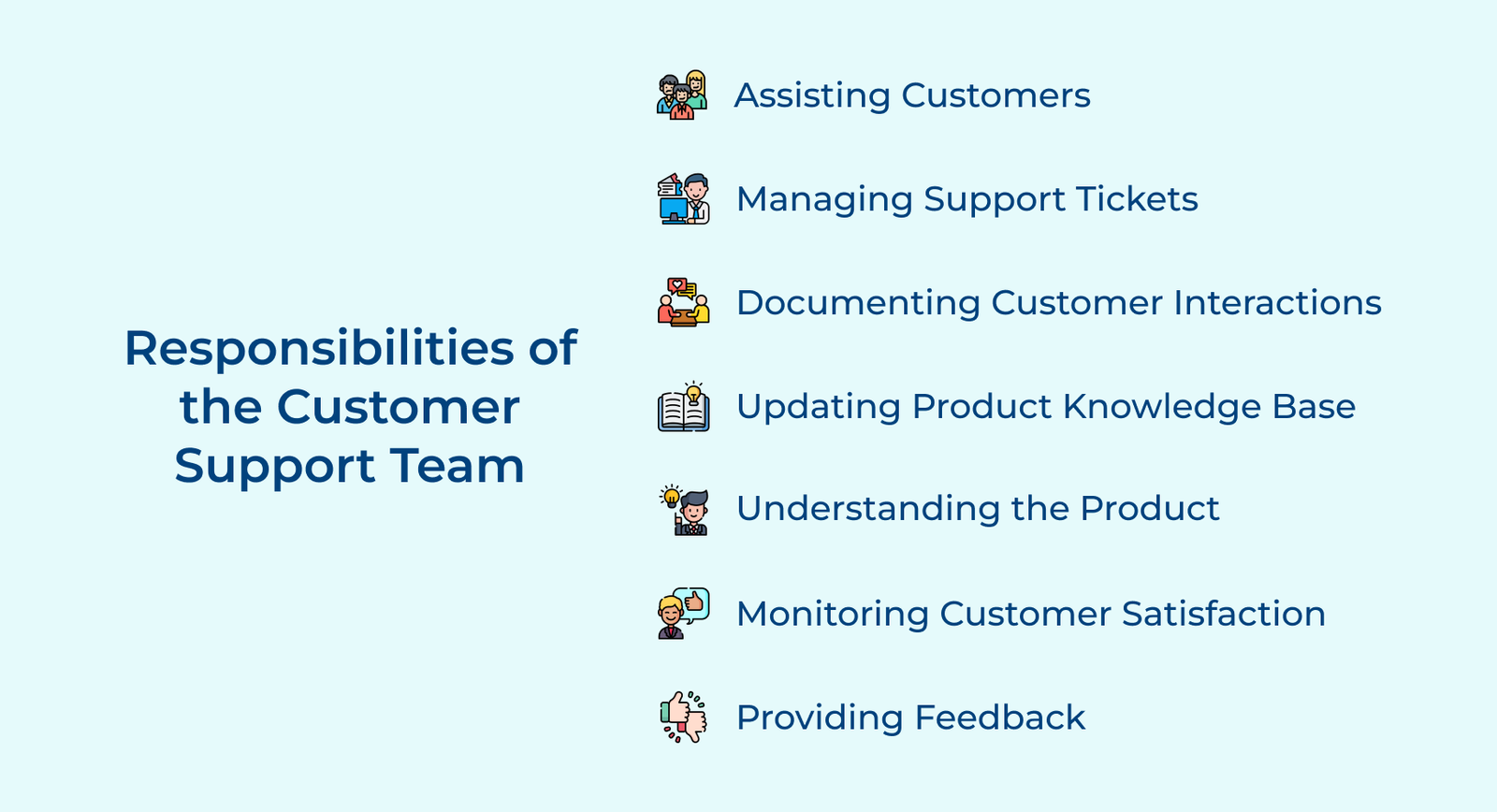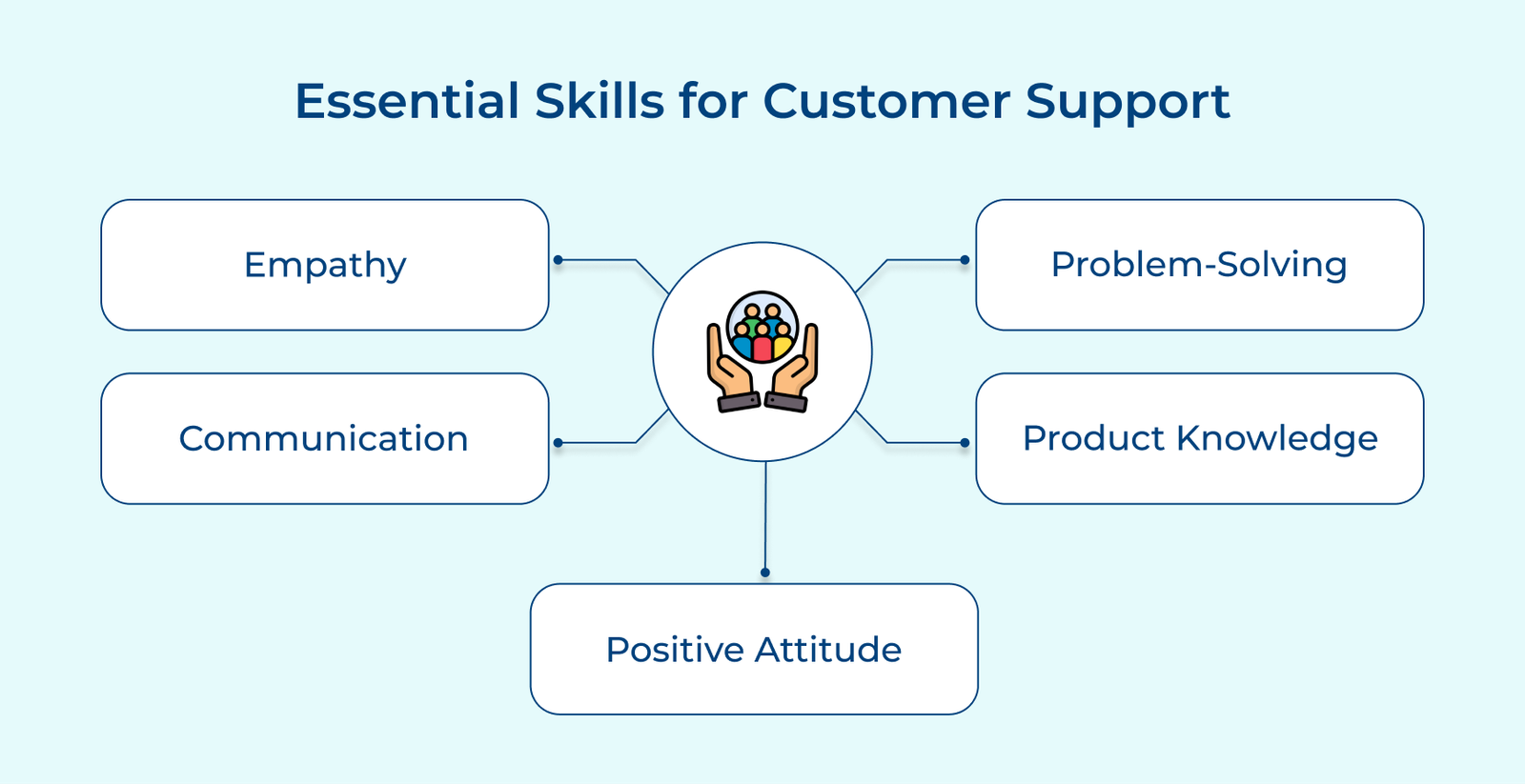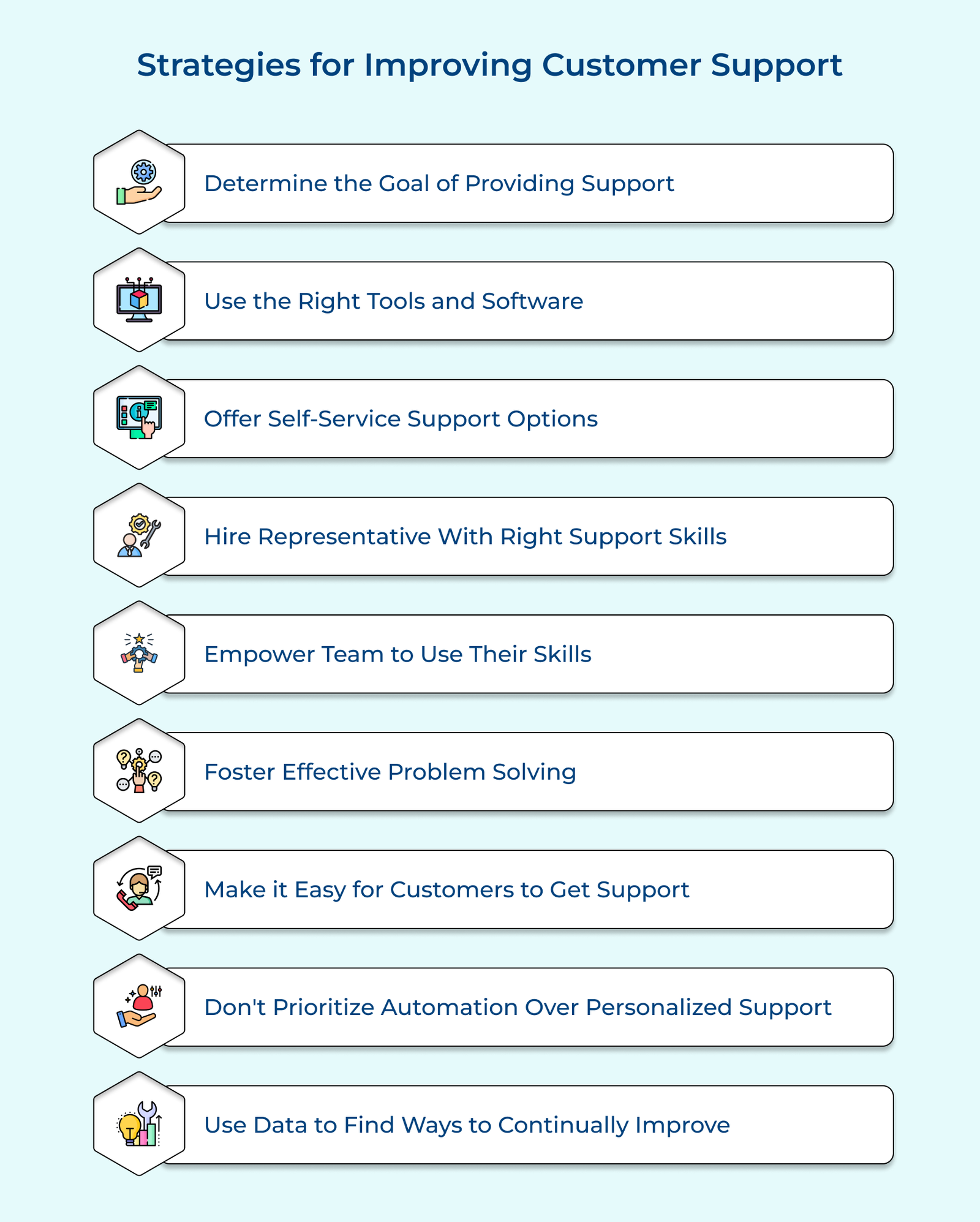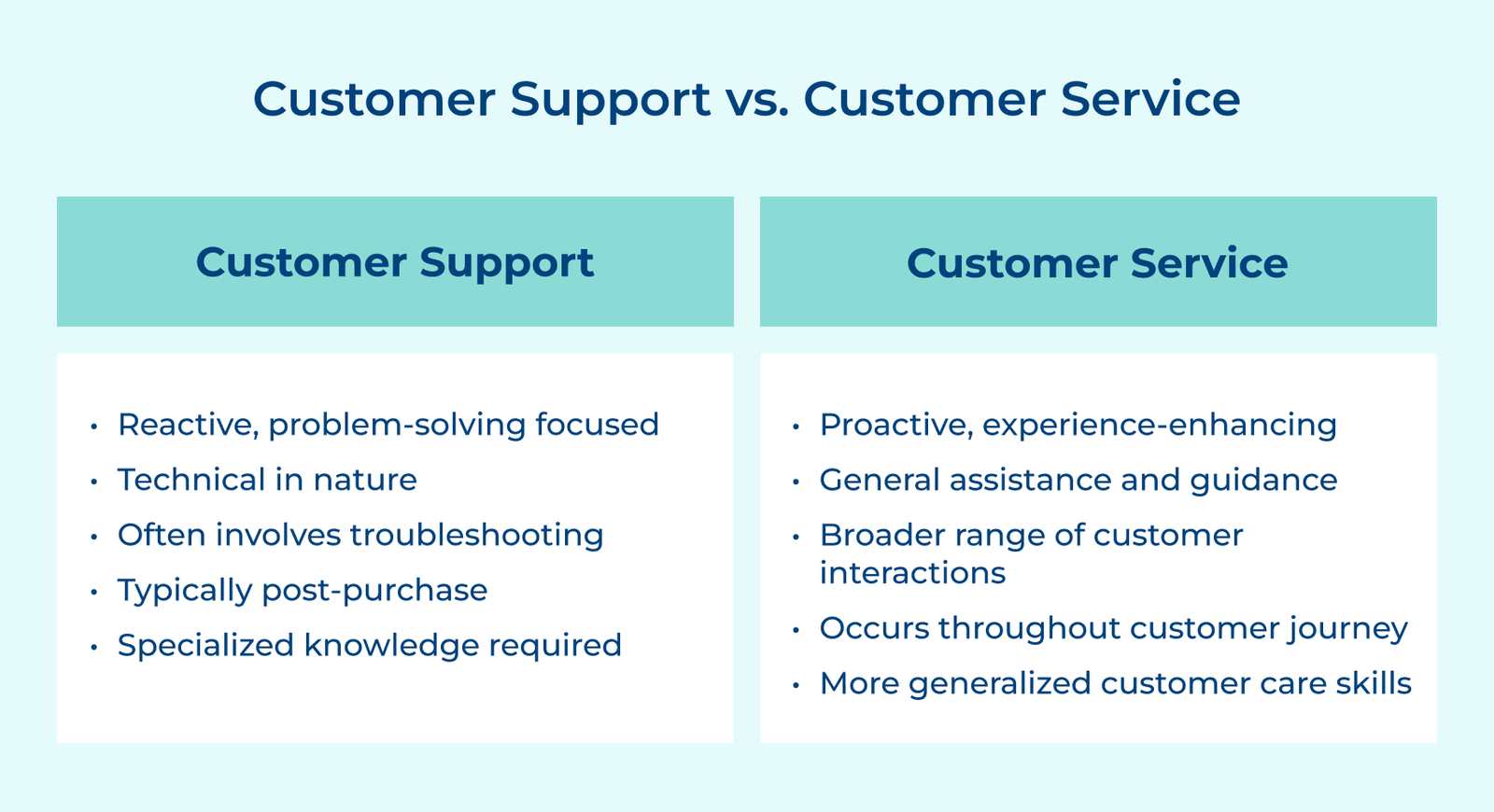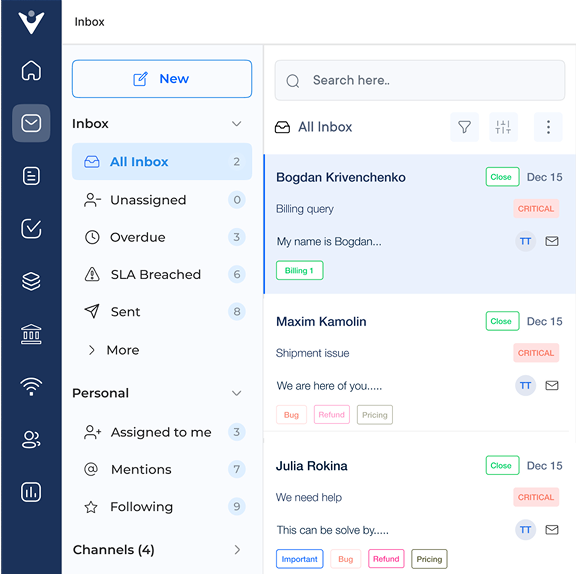1. Determine the Goal of Providing Customer Support
Determining the goal of providing customer support is crucial for improving the support strategy. Start by defining clear objectives that outline what the business wants to achieve through the support efforts.
Ensure the objectives align with the company’s mission and values to create a cohesive customer experience that reflects the brand identity. Set measurable targets to track progress and evaluate the effectiveness of the support strategy.
Pro tips:
- Involve the support team in goal-setting to ensure buy-in and leverage their frontline insights.
- Regularly adjust the goals to stay responsive to changing customer needs and market conditions.
- Communicate the support goals across all departments to enhance a company-wide commitment to customer satisfaction.
2. Ensure the Team Has the Right Tools and Software
Equipping the customer support team with the right tools and software is crucial for improving service quality. Implementing a robust Customer Relationship Management (CRM) system allows for better tracking of customer interactions, history and preferences.
Let’s assume that a company might use Salesforce as its CRM, Zendesk for omnichannel support and Confluence for its internal knowledge base. The combination gives support representatives a 360-degree view of the customer, responds through the customer’s preferred channel and accesses up-to-date information.
Pro tips:
- Regularly update and maintain the tools to ensure optimal performance.
- Consistently update and maintain the knowledge base to guarantee its accuracy.
- Provide thorough training on all tools to maximize their effectiveness and adoption.
3. Offer Self-Service Support Options
Offering self-service support options is a powerful strategy for improving customer support.
Customers can find solutions independently, reducing support ticket volume and enhancing satisfaction.
Developing comprehensive FAQs addresses common issues quickly. The FAQs should be regularly updated based on customer inquiries and organized for easy navigation. The resource should be searchable, well-categorized and accessible across devices. Implementing chatbots for common queries can provide instant responses 24/7.
How to implement:
- Continuously update content based on customer feedback and support ticket trends to ensure relevance.
- Use clear, jargon-free language and incorporate visual aids like screenshots or videos to enhance understanding.
- Integrate analytics to track usage patterns that allow to refine and improve self-service options over time.
4. Hire Representatives with Key Customer Support Skills
Hiring representatives with key support skills is crucial for improving customer service.
Focus on candidates who demonstrate strong empathy, as such individuals can easily connect with customers and understand their concerns.
Prioritize candidates with relevant experience in customer-facing roles or similar industries. The background can provide valuable insights and reduce the learning curve. Look for individuals who align with the company’s values and can contribute positively to the team dynamic.
Best practices:
- Use scenario-based interviews to assess candidates’ empathy, communication and problem-solving skills in realistic customer support situations.
- Implement a peer interview stage where potential hires interact with current team members to evaluate cultural fit.
- Develop a comprehensive onboarding program that includes shadowing experienced representatives to quickly immerse new hires in the support processes.
5. Empower the Team to Use Their Skills
Empowering customer service teams to use their skills is a crucial strategy for improving customer service. The approach focuses on developing and trusting team members to deliver exceptional support.
Providing ongoing training and development is essential. Continuous learning helps team members handle diverse customer issues more effectively. Giving autonomy in decision-making is equally important. When support representatives have the freedom to make judgment calls, they can resolve issues faster.
Pro tips:
- Create a mentorship program: Pair experienced team members with newer ones to enhance knowledge sharing and skill development.
- Implement a tiered decision-making system: Allow representatives to make decisions up to a certain level, with clear guidelines on when to escalate issues.
- Encourage and reward initiative: Recognize team members who go above and beyond in using their skills to solve customer problems, enhancing a culture of empowerment.
6. Promote Effective Problem Solving
Promoting effective problem-solving is crucial for improving customer support strategy. Support teams should be empowered to explore innovative solutions and think outside the box to encourage creative thinking. The strategy can be achieved by creating an environment that values new ideas and rewards initiatives.
Implementing structured problem-solving methodologies, such as the IDEAL (Identify, Define, Explore, Act, Look) model or the 5 Whys technique, provides a framework for approaching complex issues systematically. The methods help break down problems into manageable parts and guide the team towards effective solutions.
Pro tips:
- Establish a “solution database” where successful problem-solving approaches are documented and easily accessible to all team members.
- Conduct periodic “challenge-solving” exercises where the team works together on hypothetical complex customer issues to hone their problem-solving skills.
7. Make it Easy for Customers to Get Support
Making it easy for customers to get support is crucial for improving customer support strategy. Offering multiple contact channels is essential as it allows customers to choose their preferred method of communication. It could include phone, email, live chat, social media and even SMS. Businesses cater to different customer preferences and increase accessibility by providing diverse options.
Minimizing wait times is equally important. Implement efficient queue management systems, ensure adequate staffing during peak hours and set clear response time expectations. Quick responses show customers that their time is valued and their issues are prioritized.
Pro tips:
- Use analytics to identify the most popular contact channels and optimize them.
- Implement a callback feature to reduce phone wait times during busy periods.
- Create a clear, step-by-step guide for customers on how to seek support, visible across all platforms.
8. Don’t Prioritize Automation over Personalized Support
While automation can significantly enhance customer service efficiency, it’s crucial not to prioritize it over personalized support. Striking the right balance between automation and personalized customer support is key to improving customer satisfaction.
Automation should be primarily used for routine tasks such as answering FAQs, scheduling appointments, or providing basic product information. It frees up human agents to handle more complex issues that require empathy, critical thinking and personalized solutions.
Best practices:
- Regularly analyze customer feedback to identify which issues are best handled by automation and which require human intervention.
- Train the support team to effectively take over from automated systems, ensuring they have the full context of the customer’s journey.
- Continuously update the automated responses based on customer interactions and emerging issues to maintain relevance.
9. Use Data to Find Ways to Continually Improve
Analyze customer feedback to identify pain points and areas for improvement. Regularly review survey responses, ratings and comments to understand customer sentiments.
Track key performance indicators (KPIs) such as response time, resolution rate and customer satisfaction scores. Monitor the metrics over time to gauge performance and spot trends or issues that need addressing. Implement regular review and improvement cycles based on data insights. Use the collected information to drive decision-making and prioritize improvements in processes or technology.
Pro tips:
- Establish a data-driven culture: Encourage support teams to embrace data analysis and use insights in their daily work.
- Integrate data sources: Combine information from various touchpoints (e.g., phone, email, chat) for a comprehensive view of customer interactions.
- Act on insights quickly: Implement a system to rapidly address identified issues and measure the impact of changes to ensure continuous improvement.




